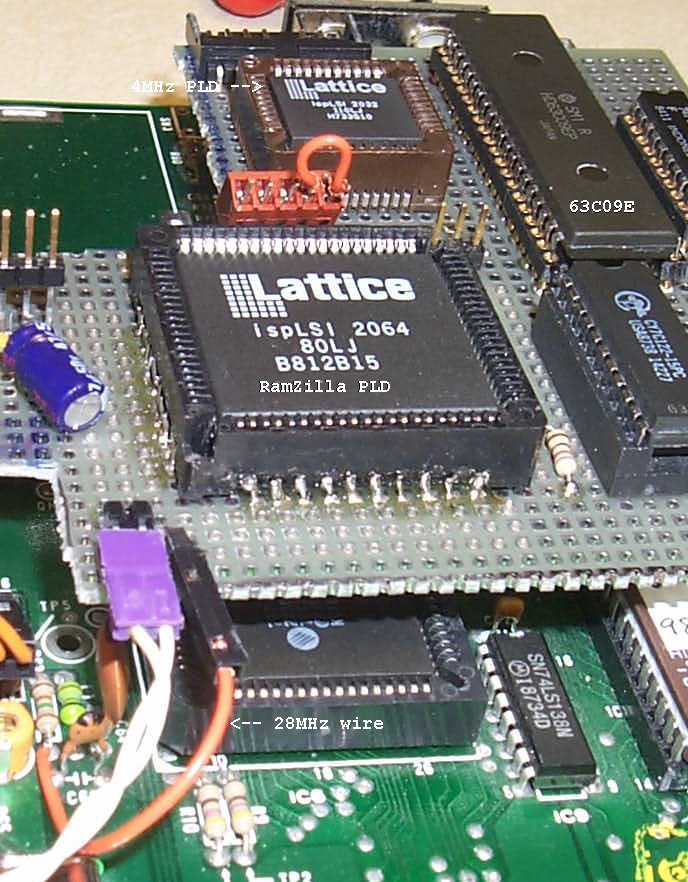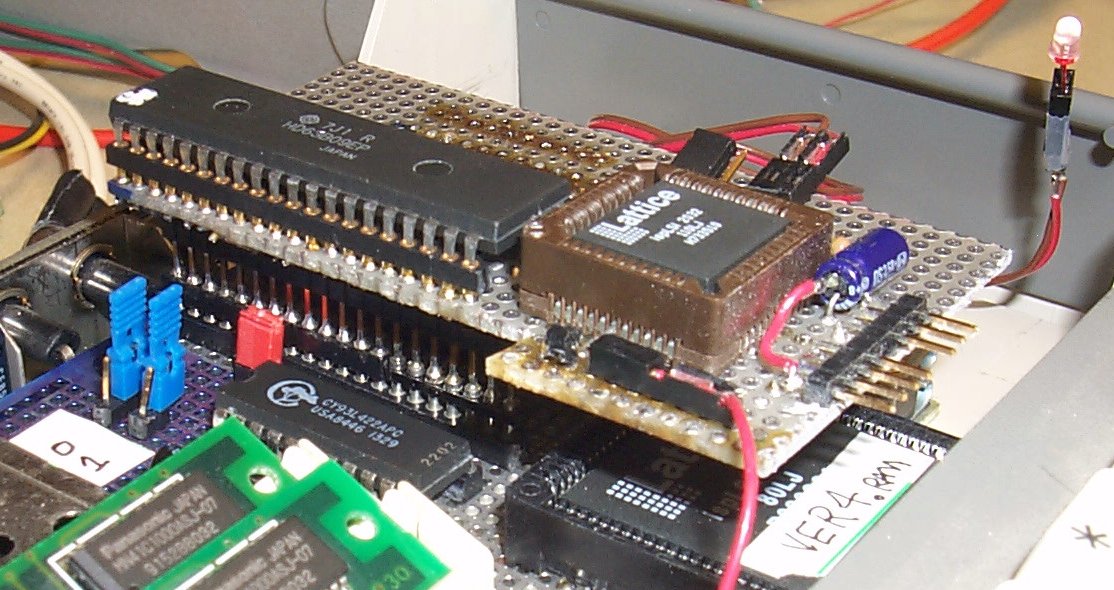4MHz Circuit. Thanks to John Kowalski's help aka Sock Master
Update:
The spliced frequency is now 4.77MHz. The waveform overlap
is now 66% instead of 50%.
A second LED was added to show when the 2MHz (POKE &HFFD9,0)
is active.

 Shows
the first prototyping board used to get it running. The (large Lattice
chip) RamZilla PLD runs the 2-megs interface, while the smaller Lattice
chip is the 4MHz chip. See the lower orange wire that picks up the 28MHz
from the crystal. Notice the large orange jumper to enable/disable the
4MHz circuit action (much crash-o when changed while running at slow speed!)
Shows
the first prototyping board used to get it running. The (large Lattice
chip) RamZilla PLD runs the 2-megs interface, while the smaller Lattice
chip is the 4MHz chip. See the lower orange wire that picks up the 28MHz
from the crystal. Notice the large orange jumper to enable/disable the
4MHz circuit action (much crash-o when changed while running at slow speed!)
This circuit puts in an AVMA controlled single burst during internal instructions (not using the CPU bus) and that's what is going on. The GIME is not overclocked just the CPU. The GIME doesn't see this 4MHz, so it doesn't cause system problems (well, it shouldn't anyway).
Here's a full version stand-alone prototype to make sure
it really works. The actual spliced frequency is about 4.77MHz. The LED
shows when it's in the 4MHz mode and actually on. The black jumper forces
the 4MHz mode off/on, could be a switch. Use: move jumper, it's on.

Flash: This circuit has been run in a Canadian CoCo-3 with a HD63B09EP, yup that's right a 2.5MHz CMOS CPU.
Names suggested for this circuit have been:
TurboZilla (my favorite)
2x4-Zilla
SpeedZilla
Splicer
From Sock Master, A program to test it:
10A=0:TIMER=0
20IFTIMER<60THENA=A+1:GOTO20
30PRINTA:RUN
According to Sock Master, typical
average times are:
100 for 1Mhz 6809
114 for 1Mhz 6309 in native mode
200 for 2Mhz 6809
228 for 2Mhz 6309 in native mode
268 for clock doubled 6809
275 for clock doubled 6309 in native
mode
I get 265 average for a clock doubled
6309 not in native mode and running in a 32 column window.
Clock doubled = 4MHz circuit in
action.